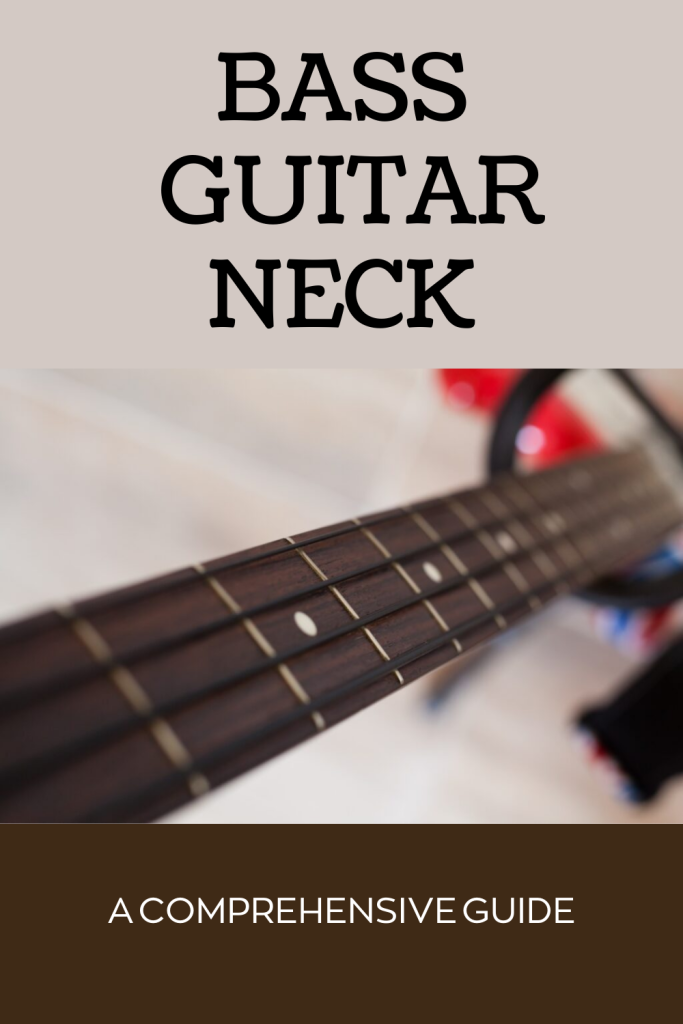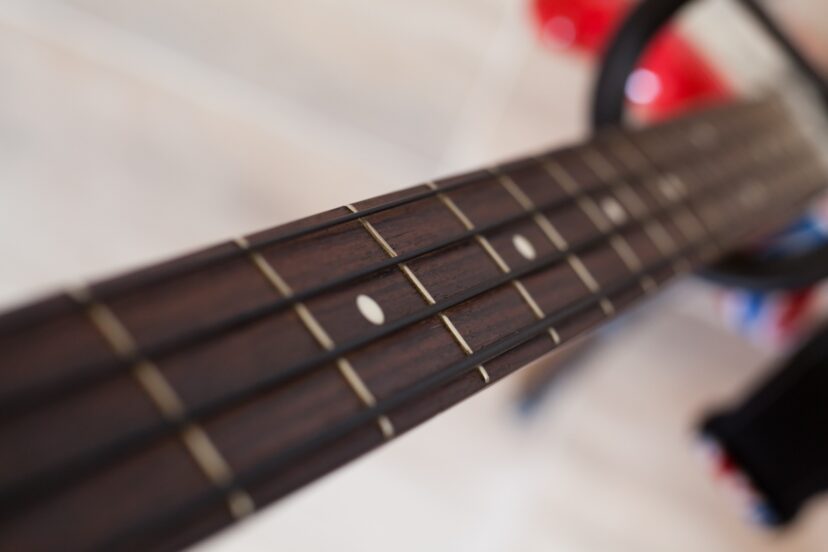Bass Guitar Neck: A Comprehensive Guide
There are many intricacies of this amazing instrument the bass guitar, particularly the neck, which plays a crucial role in the sound and playability. Let me share some of this knowledge with you!
Introduction to Bass Guitar Neck
Ah, the bass guitar neck! It’s the long, narrow part of the guitar where you press down or fret the strings to control the pitch. It’s a lot more than just a piece of wood. This integral part of the instrument is not just a piece of wood attached to the body; it’s the heart of the bassist’s interaction with their instrument, shaping everything from the sound to the playability. Let’s embark on a journey through the world of bass guitar necks, exploring their evolution, types, and the pivotal role they play in the creation of music.
The Anatomy of a Bass Guitar Neck
The neck of a bass guitar is a marvel of musical engineering, comprising several key components: the headstock, where the strings are tuned; the fretboard, which is pressed to create different notes; the frets themselves, which divide the fretboard into semitone intervals; and the truss rod, a metal rod that runs inside the neck, crucial for maintaining the instrument’s structural integrity. Understanding these parts is essential for any bassist looking to fully master their instrument.
Types of Bass Guitar Necks
Bass guitar necks come in three main types: bolt-on, set-in, and neck-through. Each has its own set of advantages and influences on the instrument’s sound and sustain. Bolt-on necks offer a sharp attack and easy maintenance, set-in necks provide a warmer tone and smoother sustain, and neck-through designs deliver unparalleled sustain and access to higher frets. The choice between these types can greatly affect a bassist’s sound and playing comfort.
Scale Length and Its Impact
Scale length, or the distance between the nut and the bridge, affects both the playability and tone of the bass. Short-scale basses are more manageable for players with smaller hands or those seeking a warmer, punchier sound. In contrast, long-scale basses offer a tighter, more defined tone ideal for genres requiring clarity and articulation in the bass lines.
Headstock
At the top of the neck, we have the headstock. This is where the tuning pegs or machine heads reside. The strings wind around these pegs, allowing you to tune your bass to the desired pitch.
Nut
Just below the headstock, you’ll find the nut. This small yet crucial component lifts the strings off the fretboard, ensuring clear, buzz-free notes.

Fretboard Wood Types
The choice of wood for the fretboard significantly influences the feel and sound of a bass guitar. Ebony, rosewood, and maple are among the most popular choices, each bringing its unique characteristics to the table. Ebony offers a smooth, fast playing experience and a bright, crisp tone. Rosewood, with its open pores and natural oils, provides a warmer, mellower sound and a slightly softer feel. Maple, known for its density and brightness, adds clarity and sustain to the bass’s tone, making it stand out in the mix. Understanding these differences can guide bassists in selecting a neck that best suits their musical style and preference.
The Significance of Frets
The choice between fretted and fretless bass guitars is a pivotal decision for many bassists. Fretted basses, with their clear note definition and ease of play, are suitable for most genres and players. They offer a tactile guide to note placement, making it easier to play with precision. Fretless basses, on the other hand, demand a higher level of skill as they lack the physical fret markers. However, they reward the player with a smooth, gliding sound reminiscent of an upright bass, allowing for microtonal adjustments and expressive vibrato that can’t be achieved with fretted instruments.
Materials Used in Bass Guitar Necks
The materials used in constructing a bass guitar neck—commonly maple, mahogany, or rosewood—significantly impact the instrument’s tone and durability. Maple offers brightness and clarity, mahogany delivers warmth and fullness, and rosewood provides a rich, resonant sound. The construction process, whether laminated for strength or single-piece for resonance, also plays a crucial role in defining the character of the bass.
Understanding the Role of Truss Rod in a Bass Guitar Neck
Inside the neck is a metal rod known as the truss rod. This crucial component counteracts the tension exerted by the strings, keeping the neck straight. It’s adjustable, allowing you to fine-tune the neck’s curvature to your preference. Proper maintenance of the bass neck is crucial for preserving playability and tone. Regular adjustments to the truss rod can correct curvature caused by string tension or environmental changes, ensuring the neck remains straight and true. Cleaning the fretboard, oiling it if necessary (especially for porous woods like rosewood), and checking for fret wear are also essential steps in neck care. These maintenance routines not only extend the life of the instrument but also make playing more enjoyable and efficient.
The Influence of Neck Profile and Width on Playability
The shape and width of the neck, known as the neck profile, can greatly influence the playability of a bass guitar. Profiles range from the thin and flat ‘C’ shape, which is easy for fast playing and soloing, to the chunky ‘U’ shape, which gives a fuller grip and is preferred for thumb-over playing. The neck width also matters. Wider necks can accommodate more strings, but they might be more challenging to play, especially for those with smaller hands.
Regular Maintenance
Regular cleaning of the fretboard can keep it in top condition. Wipe down your strings and neck after each session to remove sweat and oils, which can degrade the wood and metal over time.

Conclusion
The bass guitar neck is a central aspect of the instrument’s design that deeply influences its playability, tone, and overall character. From the wood type and construction to the choice between fretted and fretless, every detail matters in crafting the perfect bass experience. Whether you’re a beginner seeking your first instrument or a seasoned player looking to customize your sound, understanding the nuances of bass guitar necks can empower you to make informed choices, leading to a more fulfilling musical journey.
FAQs
1. Why is the material of the bass guitar neck important?
The material, usually different types of wood, significantly influences the sound and feel of the instrument. Each wood type has unique tonal properties and contributes to the overall resonance and sustain.
2. How often should I adjust the truss rod on my bass neck?
There’s no one-size-fits-all answer as it depends on various factors, including changes in weather and humidity, string gauge, and your playing style. As a rule of thumb, you should check the neck relief periodically and adjust the truss rod whenever necessary.
3. What are the benefits of a bolt-on bass guitar neck?
Bolt-on necks are more robust and easier to replace or repair than other types. They also tend to produce a punchier tone with more emphasis on the midrange.
4. How can I maintain my bass guitar neck?
Regular cleaning, especially after playing, can prevent sweat and oils from damaging the wood and metal parts. It’s also beneficial to periodically adjust the truss rod and keep the guitar in a stable environment away from drastic temperature and humidity changes.
5. What’s the best type of bass guitar neck for beginners?
Generally, beginners might find bolt-on necks with thinner ‘C’ shaped profiles and narrower widths more comfortable and easier to play. However, the ‘best’ is highly subjective and depends on individual preferences.




